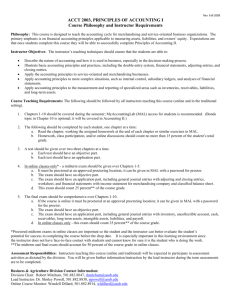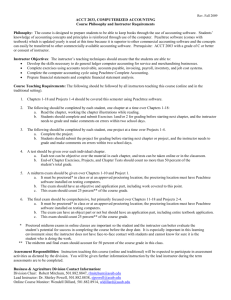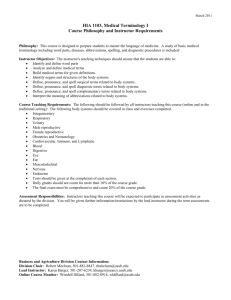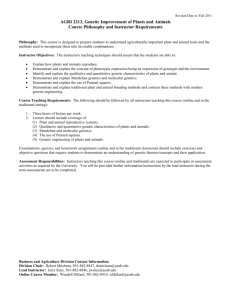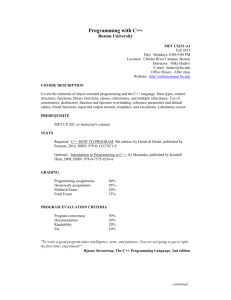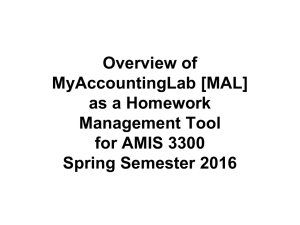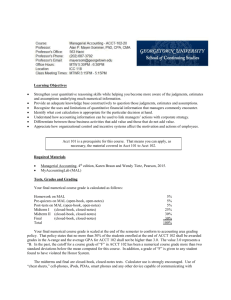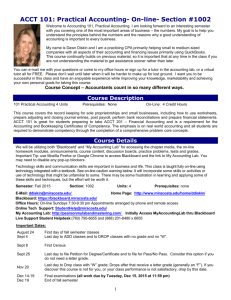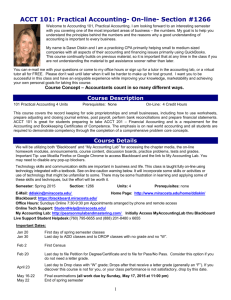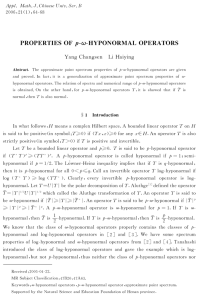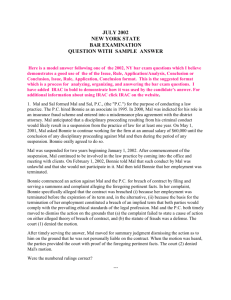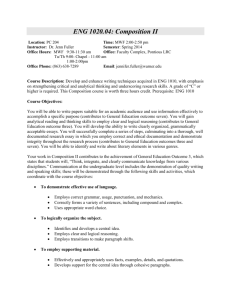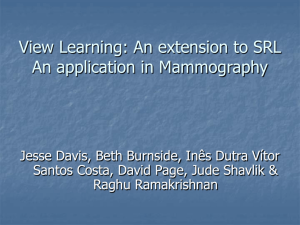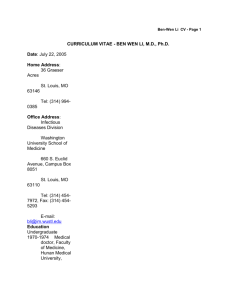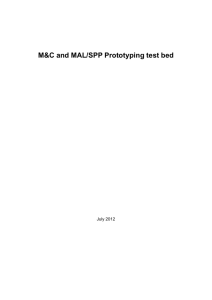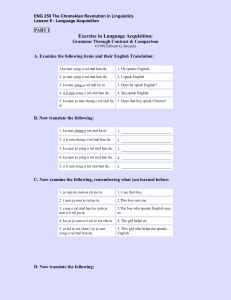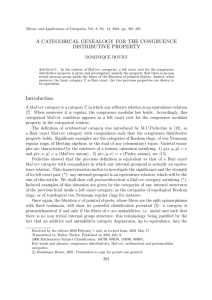Introduction to Accounting
advertisement
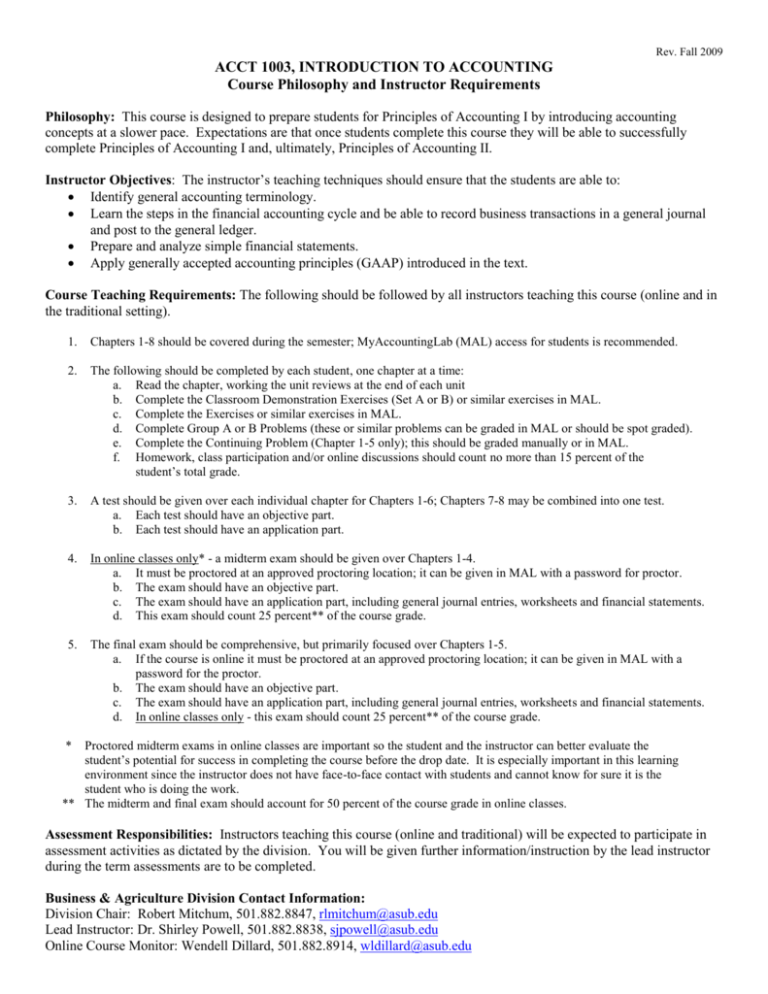
Rev. Fall 2009 ACCT 1003, INTRODUCTION TO ACCOUNTING Course Philosophy and Instructor Requirements Philosophy: This course is designed to prepare students for Principles of Accounting I by introducing accounting concepts at a slower pace. Expectations are that once students complete this course they will be able to successfully complete Principles of Accounting I and, ultimately, Principles of Accounting II. Instructor Objectives: The instructor’s teaching techniques should ensure that the students are able to: Identify general accounting terminology. Learn the steps in the financial accounting cycle and be able to record business transactions in a general journal and post to the general ledger. Prepare and analyze simple financial statements. Apply generally accepted accounting principles (GAAP) introduced in the text. Course Teaching Requirements: The following should be followed by all instructors teaching this course (online and in the traditional setting). 1. Chapters 1-8 should be covered during the semester; MyAccountingLab (MAL) access for students is recommended. 2. The following should be completed by each student, one chapter at a time: a. Read the chapter, working the unit reviews at the end of each unit b. Complete the Classroom Demonstration Exercises (Set A or B) or similar exercises in MAL. c. Complete the Exercises or similar exercises in MAL. d. Complete Group A or B Problems (these or similar problems can be graded in MAL or should be spot graded). e. Complete the Continuing Problem (Chapter 1-5 only); this should be graded manually or in MAL. f. Homework, class participation and/or online discussions should count no more than 15 percent of the student’s total grade. 3. A test should be given over each individual chapter for Chapters 1-6; Chapters 7-8 may be combined into one test. a. Each test should have an objective part. b. Each test should have an application part. 4. In online classes only* - a midterm exam should be given over Chapters 1-4. a. It must be proctored at an approved proctoring location; it can be given in MAL with a password for proctor. b. The exam should have an objective part. c. The exam should have an application part, including general journal entries, worksheets and financial statements. d. This exam should count 25 percent** of the course grade. 5. The final exam should be comprehensive, but primarily focused over Chapters 1-5. a. If the course is online it must be proctored at an approved proctoring location; it can be given in MAL with a password for the proctor. b. The exam should have an objective part. c. The exam should have an application part, including general journal entries, worksheets and financial statements. d. In online classes only - this exam should count 25 percent** of the course grade. * Proctored midterm exams in online classes are important so the student and the instructor can better evaluate the student’s potential for success in completing the course before the drop date. It is especially important in this learning environment since the instructor does not have face-to-face contact with students and cannot know for sure it is the student who is doing the work. ** The midterm and final exam should account for 50 percent of the course grade in online classes. Assessment Responsibilities: Instructors teaching this course (online and traditional) will be expected to participate in assessment activities as dictated by the division. You will be given further information/instruction by the lead instructor during the term assessments are to be completed. Business & Agriculture Division Contact Information: Division Chair: Robert Mitchum, 501.882.8847, rlmitchum@asub.edu Lead Instructor: Dr. Shirley Powell, 501.882.8838, sjpowell@asub.edu Online Course Monitor: Wendell Dillard, 501.882.8914, wldillard@asub.edu
